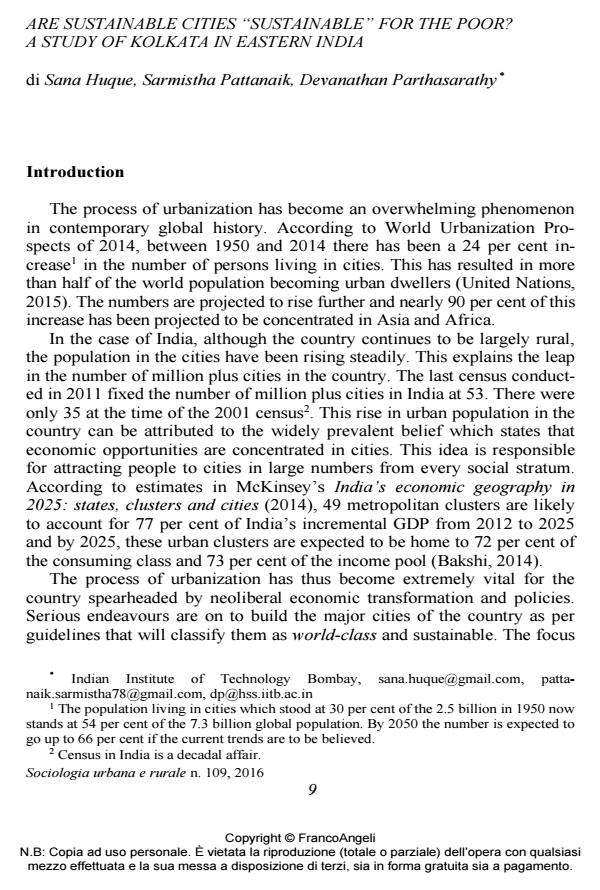Are sustainable cities "sustainable" for the poor? a study of kolkata in eastern india
Titolo Rivista SOCIOLOGIA URBANA E RURALE
Autori/Curatori Sana Huque, Sarmistha Pattanaik, Devanathan Parthasarathy
Anno di pubblicazione 2016 Fascicolo 2016/109
Lingua Inglese Numero pagine 13 P. 9-21 Dimensione file 377 KB
DOI 10.3280/SUR2016-109002
Il DOI è il codice a barre della proprietà intellettuale: per saperne di più
clicca qui
Qui sotto puoi vedere in anteprima la prima pagina di questo articolo.
Se questo articolo ti interessa, lo puoi acquistare (e scaricare in formato pdf) seguendo le facili indicazioni per acquistare il download credit. Acquista Download Credits per scaricare questo Articolo in formato PDF

FrancoAngeli è membro della Publishers International Linking Association, Inc (PILA)associazione indipendente e non profit per facilitare (attraverso i servizi tecnologici implementati da CrossRef.org) l’accesso degli studiosi ai contenuti digitali nelle pubblicazioni professionali e scientifiche
L’obiettivo principale di questo articolo è rivedere criticamente alcuni approcci associati all’ambientalismo urbano e alle città sostenibili, attraverso l’analisi del caso di alcune tra le principali città indiane. Calcutta viene presa in considerazione per via dei suoi tentativi di raggiungere lo status di world-class city. Attraverso lo studio di caso, l’articolo tenta di esaminare se questa città stia riuscendo o meno ad abbinare giustizia sociale e giustizia ecologica nell’ambito del suo attuale approccio allo sviluppo.
Parole chiave:Sviluppo, spostamento, ambientalismo, sussistenza, sostenibilità, zone umide.
Sana Huque, Sarmistha Pattanaik, Devanathan Parthasarathy, Are sustainable cities "sustainable" for the poor? a study of kolkata in eastern india in "SOCIOLOGIA URBANA E RURALE" 109/2016, pp 9-21, DOI: 10.3280/SUR2016-109002